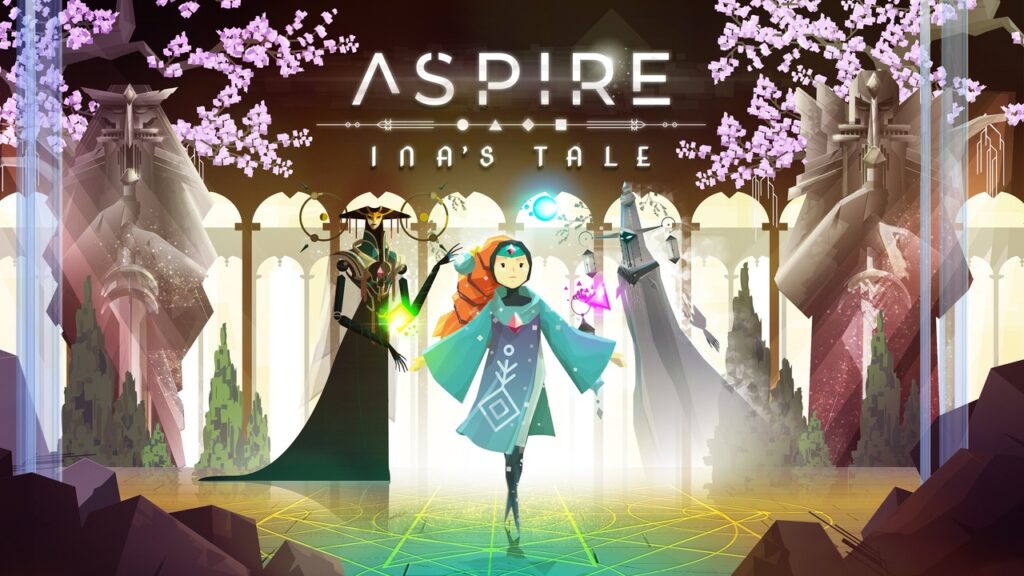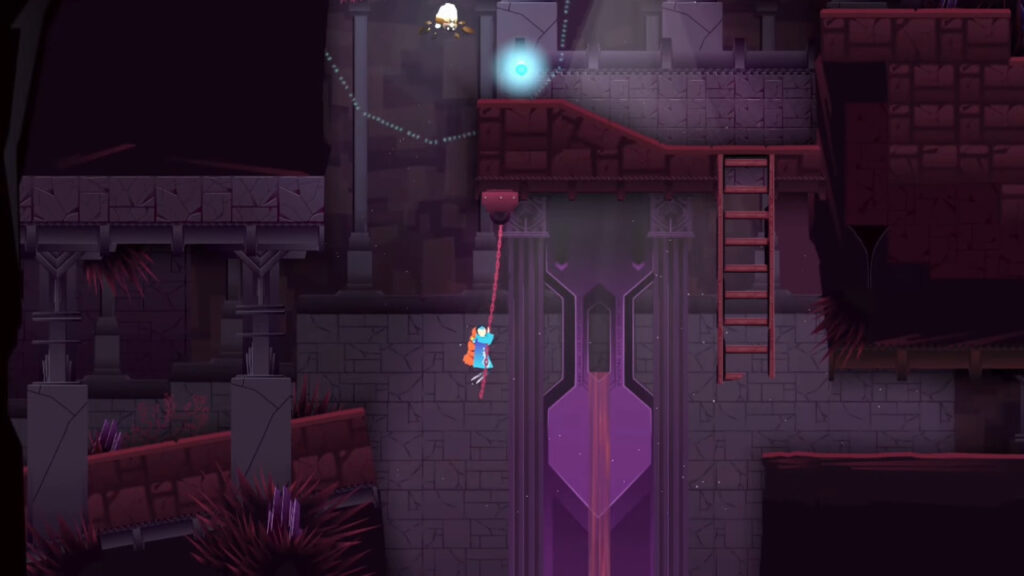
Developer: Wondernaut Studio
Publisher: Untold Tales
Platform: Switch, PC, Xbox One
Tested on: Switch
Aspire: Ina’s Tale – Review
When we saw the reveal trailer for Aspire: Ina’s Tale, we were immediately enamored. A gorgeous 2D puzzle platformer set in a dreamlike fairytale world? Count us in! Although the art style was quite different, Aspire reminded us of GRIS, which we absolutely adored. We were hoping to find a similar experience with Wondernaut Studio’s new release. Unfortunately, as you’ll find out, Aspire didn’t quite live up to our expectations, instead delivering a less than stellar gameplay experience wrapped in gorgeous aesthetics.
Story
When you first start up Aspire, you’re greeted with a short and cryptic explanation of the situation that our protagonist, the young priestess Ina, finds herself in. She’s being held captive inside a living tower that feeds on her dreams to keep its heart beating. Of course, this isn’t a predicament that’s ideal for our protagonist, and so, it’s up to you, the player, to guide her outside of the tower and towards freedom. The game’s core premise isn’t the most original, but the opening text drops a couple of hints concerning things to come, and these are just intriguing enough to keep things interesting. For example, the blurb mentions that although a knight in shining armor is set to make an appearance, the tale isn’t about him rescuing Ina. Instead, Aspire unfolds into a story about how the young priestess discovers her own strengths.
As you make your way through the tower, you’ll discover that you aren’t the only inhabitant of the sentient structure either. Between the rooms that make up the Aspire’s core experience, a cast of quirky characters is eager to have poignant conversations with our heroine. These scenes help sell Aspire as an emotional fairytale and provide some of the game’s highlights. It is in these moments that Aspire dares to break away from the damsel-in-distress trope, fleshing out not just Ira herself, but the other cast members as well.
Graphics
When we first laid eyes on Aspire’s visuals, we were suitably impressed. Through gorgeous illustrations, expert use of color, and fantastic lighting, Wondernaut Studio creates a dream-like fairytale world that is a joy to spend time in, filled with jaw-dropping sights. Unfortunately, the visuals aren’t perfect, at least not in the Switch version: at certain points in the game, we noticed a severe frame rate drop. Aspire isn’t a fast-paced game by any means, so having to deal with the game’s visuals tanking is more frustrating than game-breaking, but it’s still annoying enough to mention.
Sound
Aspire’s soundtrack is perhaps the game’s standout feature. Although almost every other element of the game is flawed, we couldn’t find any faults with the music. Not only is it beautiful and serene by itself, but it also ties everything together. The tunes shift depending on what is happening on screen, which helps to emphasize the mood the game sets at any given point. Although Aspire lacks voice acting, the music successfully conveys the emotions of the characters during the dialogue scenes as well, creating another layer of immersion.
Gameplay
As Aspire relies on evoking a gorgeous fairytale world first and foremost, we were a bit worried that the gameplay would turn out to be an afterthought. The game is a fairly standard 2D puzzle platformer and it’s quite a short experience, clocking in at just under four hours worth of content. Unfortunately, our worries about the overall gameplay experience were justified. Aspire’s gameplay isn’t just riddled with inconsistent puzzle designs and shoddy controls but several game-breaking bugs as well.
It’s a bit baffling because, at its core, the game is very simplistic. Taking control of Ina, you move from room to room, taking on intricate puzzles that involve sliding blocks around or moving orbs. The aim of each room is to clear the way to the next room, with the ultimate goal of course escaping the tower. For the most part, puzzles can be taken on at a relatively leisurely pace, which ties into the atmosphere that the game tries to evoke. There are a few time-based puzzles, and these are needlessly frustrating simply because controlling Ina isn’t as smooth as we would like it to be.
Part of this is due to the game’s unnecessary small hitboxes for interactions. There were times when we were literally on top of the object we were supposed to do something with only to have to move two pixels to the left just to be able to activate it. It’s a frustrating element that becomes even worse whenever you need to time your actions exactly. It’s a shame because figuring out the puzzles isn’t overly difficult, but when you can’t progress because you miss an action due to the game’s need for pixel-perfect interaction distance or precise timing, the fun is quickly sucked out of the experience. This wouldn’t be as much of an issue if controlling Ina herself wasn’t as tedious as it currently is, but as it stands, moving our protagonist feels clunky. At times it even seemed there was a slight input delay which led to unfair deaths as we had to time our jumps across chasms precisely.
To make matters worse, we had to restart our game several times due to glitches. At a certain point, the room we entered didn’t load, presenting us with a black void instead, and at another point, the camera froze. Finally, although they weren’t glitches but instances of poor game design, there were several moments where we screwed up a puzzle and got stuck, prompting yet another restart. We’re not sure whether these issues are present in all versions of the game or if it’s just the Switch port that suffers, but unless a patch arrives soon, spending time in Aspire’s fairytale world simply isn’t worth the frustration. In a way, the gameplay issues are made more frustrating because of how gorgeous this game is. Had this been a game that looked as bad as it played, we simply would have shrugged and moved on, but here we actually wanted to spend more time in the virtual environment that unfolded before us, only to be taken out of the experience by how frustrating it was to navigate it.
Conclusion
Aspire: Ina’s Tale succeeds in creating an immersive atmosphere through its serene soundtrack and gorgeous visuals, but once you look beyond the aesthetics, everything starts to fall apart. It’s a shame because we really wanted to like this game. This gorgeous world deserves much better. If anything, Aspire: Ina’s Tale is a perfect example of why you shouldn’t judge a book by its cover. Hopefully, the game’s issues will be resolved in a few months, but until they are, we suggest that you simply boot up GRIS again instead.
Aspire: Ina's Tale - Review,1 Comment
Leave a Reply
You must be logged in to post a comment.










[…] we didn’t know any better, we’d assume that Atone was part of a trilogy, together with Aspire and Arise. All three of these games have similar-sounding titles, share the same atmosphere and […]